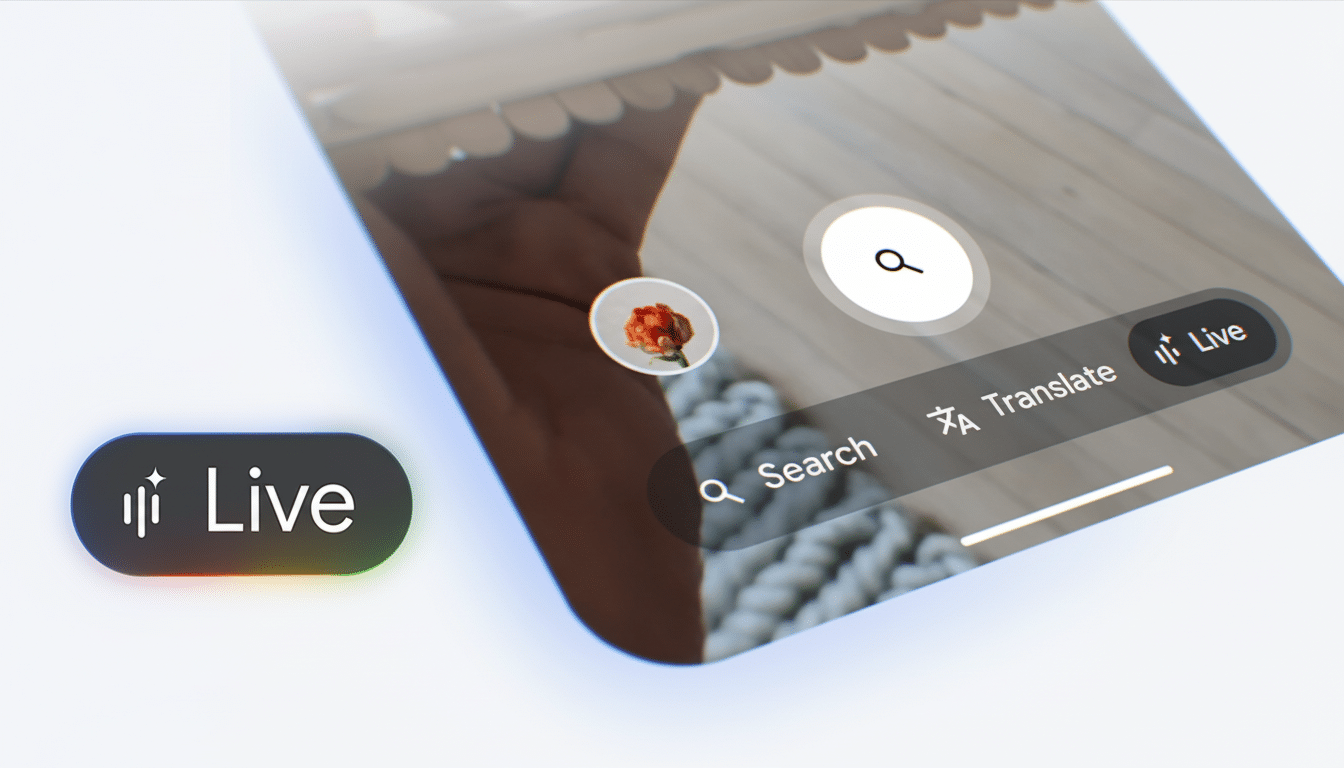Google is testing a privacy-centric toggle for Search Live that would prevent the feature from listening once you’ve left the interface. The shift, which was discovered in an examination of the most recent Google app build, specifically answers user complaints that demands from the virtual assistant keep its microphone constantly open after you’ve tried to jump into something else.
What This Means For Voice And Video Search
Search Live is the new real-time search experience from Google, where you can talk to or show the camera something and get results that are continually clearer. Today, if you minimize the app while mid-conversation, Search Live can keep listening in the background until someone else finds something worth searching for. That behavior has made it convenient for hands-free operation, but it has raised questions among privacy-sensitive users.

An incoming feature seems to give you that control back. A “Continue in background” toggle has also been found, which could make it so users can choose to have Search Live continue listening even after they close the interface or for it to stop and then need reactivation. Beyond privacy optics, that would also help with battery and data consumption by not mindlessly recording background audio constantly.
New Toggles Signal Clearer Controls in Search Live
Multiple in-development switches for Search Live were discovered by app spelunkers such as AssembleDebug in the Google app 16.44.59 on arm64 devices.
Next to “Continue in background” is an option called “Interrupt live conversations,” which we assume might be a fast way to end the call using voice controls or tapping; there’s also a new toggle marked “Live Captions” you can hit that will show transcripts of whatever people are saying to each other during a call.
Live Caption has been available systemwide on Android since it launched as an accessibility feature, but having the capability inside Search Live would mean transcripts are native to the experience. Transcripts can enhance trust and usability: they enable users to check what the system heard and correct misinterpretations quickly, as well as keeping a record for complex, multi-step tasks.
Note that these controls are still under testing and might be hidden behind server-side flags. Like many Google app features, these could change names, ship to a limited set of users in an A/B test, or never roll out more broadly.
Connecting AI Mode and Search Live for Seamless Use
One more little but telling adjustment has been spotted in AI Mode, with a new Search Live shortcut being tested directly within the text input field. That’s on top of the existing shortcut laid under the search bar, and it speaks to Google’s larger intentions: mix traditional Search with conversational AI and multimodal input so that users can seamlessly switch between typing, discussing, and displaying.

The effort is consistent with Google’s plan to deliver a more integrated experience across its assistants and various AI offerings. The company has gradually eroded the line between search results and AI summaries while pushing real-time voice and video understanding to the forefront. One-tap access to Search Live from AI Mode is a common-sense link between those two workflows.
The Pressure Around Privacy And Compliance Is Mounting
Controls that effectively halt background listening are more than a UX nicety; they reflect a broader trend toward explicit consent and transparency. Android does display microphone indicators and offers per-app permissions, but it is moving toward providing users with granular control at the session level as part of privacy standards that have been embraced by regulators including the FTC in the U.S., and data protection authorities in Europe.
Trust is the competitive moat and #1 KPI, particularly as multimodal AI becomes mainstream. Statista has predicted that billions of voice assistants will be active worldwide, and as use grows, so does the expectation of a clear line around privacy. It’s that kind of easy “I don’t want you to keep listening after I walk away” switch that gives users peace of mind without diminishing capability.
How This Might Look in Practice for Search Live
If it appears and the setting ships, turning “Continue in background” off would end microphone use when you left Search Live and a flick or hotword would get you back into it again. With it on, Search Live would continue monitoring for a moment for follow-ups after an initial result, like how a small beat can elapse in some voice assistants waiting for clarifying questions. Combine that with Live Captions and you get a play-by-play of what’s being heard, which is something accountability depends on.
What to Watch Next as Google Tests Search Live
There’s no official release timeline. Past features discovered in app teardowns have been known to spend a good amount of time merely in development or may not necessarily even see the light of day. If you’re really champing at the bit to try these as soon as they’re available, keep an eye on the Google beta channel for changes—although server-side activation is still in charge.
The takeaway, then, is that Google is going to push towards Search Live users having more immediate control over listening behavior, but also have clearer visual feedback in the way of captions and a stronger relationship with AI Mode. Those tiny toggles might make a huge difference in how comfortable people are with adopting always-ready, multimodal search.

